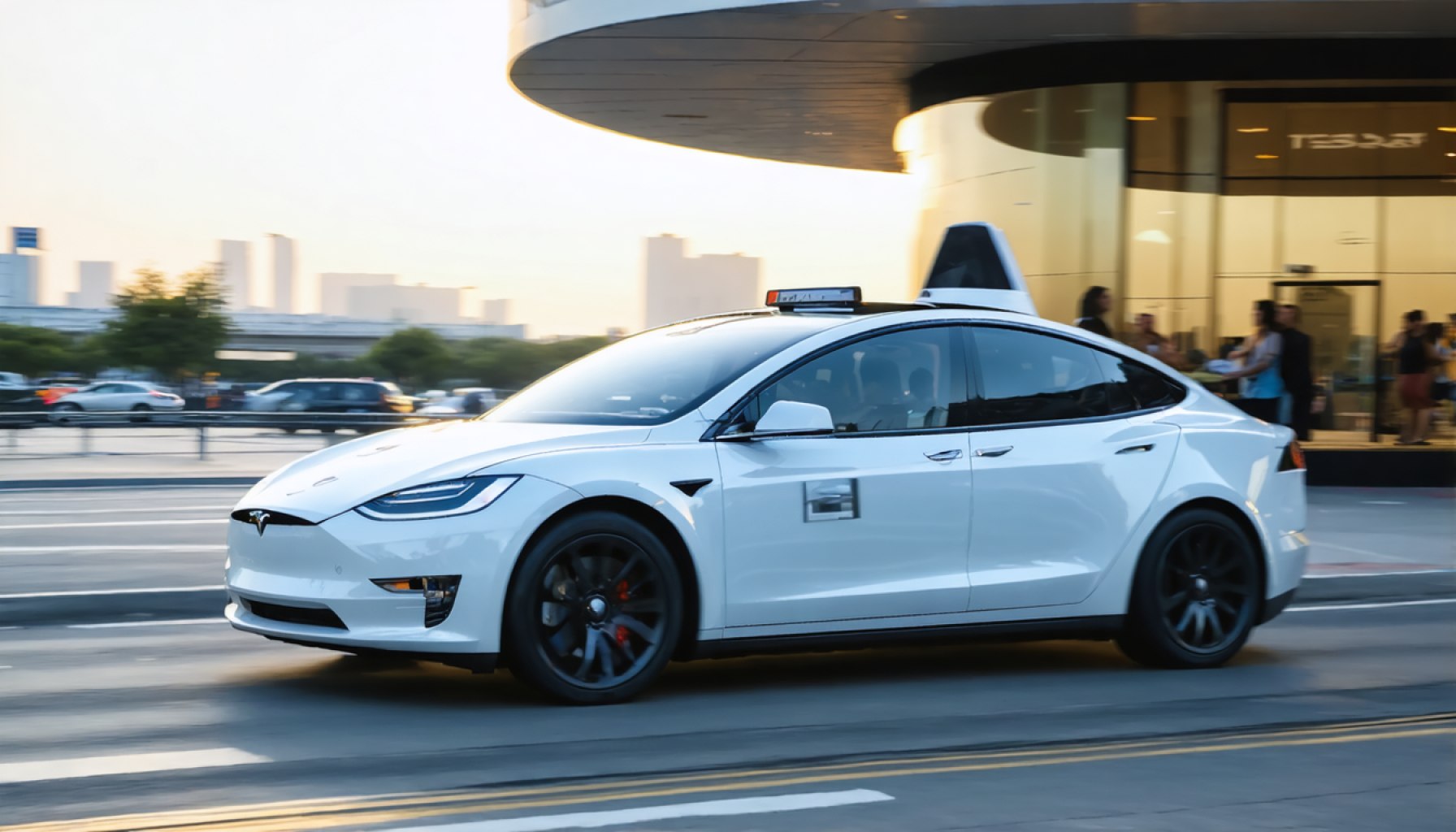- Self-driving vehicles are set to revolutionize urban mobility, with Uber and May Mobility launching autonomous fleets by 2025, starting in Arlington, Texas.
- Uber is forming alliances with leaders like Waymo and WeRide to capture the growing robotaxi market, facing competition from Tesla’s Cybercab.
- The U.S. government’s cautious approach includes safety mandates and regulatory adjustments to balance innovation and safety in autonomous transport.
- May Mobility, backed by Toyota and BMW, brings its expertise to Arlington, enhancing urban commutes with self-driving technology.
- The shift towards autonomy raises broader questions about the future of urban transport and society’s readiness for driverless experiences.
- The move to autonomous vehicles is not just about technological advancements but the potential to transform connectivity and urban living.
A quiet yet electrifying revolution is buzzing through the streets of American cities. As if summoned straight from the pages of a sci-fi novel, self-driving vehicles are poised to redefine urban mobility. Significant moves are unfolding as Uber partners with May Mobility to introduce a fleet of autonomous vehicles by late 2025, starting in Arlington, Texas.
Imagine the sleek silhouette of a Toyota Sienna hybrid minivan navigating the bustling urban tapestry—no human hands on the wheel, yet it glides with precision. These vehicles, though initially manned by safety drivers, promise to usher in a new era where artificial intelligence becomes the true pilot.
Uber, the titan of ride-sharing, isn’t alone in this quest. As they weave alliances with self-driving pioneers like Alphabet’s Waymo and China’s WeRide, their sights are set firmly on the elusive horizon of the robotaxi market. They face formidable contenders like Tesla, whose audacious Cybercab concept tantalizes the imagination.
The journey toward autonomy isn’t merely about engineering marvels; it’s also a tapestry woven with regulatory threads. The U.S. federal government’s cautious dance—balancing safety and innovation—mandates incident reports, yet expands certain exemptions, offering a nod to the inevitable march of technology.
Amidst this technological choreography, May Mobility emerges as a critical player. Anchored in Ann Arbor, Michigan, and funded by industry giants Toyota and BMW, they are not new to Arlington. With experience since 2021, they are poised to tap into Texas’s vibrant urban canvas, readying for a seamless commuter experience.
Yet, beyond the allure of driverless vehicles, a broad question lingers in the air: What does this mean for the future of urban transport? As technology’s hand shapes our daily commutes, the heart of the matter is our readiness to embrace a world where human presence is felt more as a passenger and less as a driver. This brave new world beckons—are we ready to ride into the future?
The takeaway is clear: modern transportation edges ever closer to a self-driving reality. Armed with innovation and strategic alliances, companies like Uber and May Mobility push the boundaries of possibility. But as these driverless taxis inch closer to reality, they remind us it isn’t just about the technology; it’s about the transformative potential of a connected, autonomous tomorrow.
Are You Ready for the Robotaxi Revolution? Here’s What You Need to Know!
The prospect of self-driving vehicles has long been envisioned as a futuristic concept, but it is steadily becoming a reality on the streets of American cities. Let’s delve deeper into the factors driving this change and the potential implications for urban transportation.
How Autonomous Vehicles are Shaping Urban Mobility
1. The Role of Key Players:
Uber and May Mobility are at the forefront of the autonomous vehicle revolution. Uber’s strategic partnerships with companies like Alphabet’s Waymo and China’s WeRide mark significant steps toward deploying autonomous fleets. Meanwhile, May Mobility’s successful pilot projects in Arlington since 2021 provide a practical framework for expansion.
2. Technology Underpinning Autonomy:
Autonomous vehicles rely heavily on advanced technologies such as machine learning, LIDAR sensors, and GPS mapping. Toyota Sienna hybrid minivans equipped with these technologies are expected to navigate streets seamlessly, though initially with safety drivers onboard.
3. Regulatory Landscape:
A careful balance between innovation and public safety is necessary. The U.S. government mandates incident reporting for autonomous vehicles; however, it is also facilitating progress by offering certain exemptions. This regulatory framework will be crucial in determining how quickly these technologies can be adopted.
Real-World Use Cases and Benefits
– Reduced Traffic Congestion: Autonomous vehicles can optimize traffic flow, potentially reducing congestion and making commutes faster.
– Increased Accessibility: For those unable to drive, such as the elderly or disabled, autonomous vehicles offer a new level of independence.
– Environmental Impact: Hybrid and electric autonomous vehicles reduce reliance on gasoline, contributing to decreased emissions.
Industry Trends and Future Predictions
– Expanding Market: According to a report by Allied Market Research, the global autonomous vehicle market is projected to grow significantly, reaching approximately $556.67 billion by 2026.
– Integration with Public Transport: Cities might integrate autonomous vehicles with existing public transport systems to create more comprehensive, efficient mobility solutions.
Challenges and Considerations
– Public Trust and Safety: Gaining public trust is crucial. Despite advancements, ensuring the technology’s reliability and safety remains paramount.
– Job Displacement: The rise of autonomous vehicles may lead to job displacement for drivers, necessitating strategic workforce transition programs.
Quick Tips for Embracing an Autonomous Future
– Stay Informed: Keep up-to-date with the latest developments in autonomous vehicle technology.
– Explore Ride-Sharing Options: For those in urban areas, experimenting with autonomous ride-sharing when available can offer insights into the future of commuting.
– Advocate for Policy Changes: Engage with local and federal representatives to ensure that regulations keep pace with technological advancements while valuing public safety and job security.
The impending arrival of self-driving vehicles promises to transform urban transportation profoundly. Companies such as Uber and May Mobility, driven by technological innovation and strategic collaborations, are at the forefront of this thrilling revolution. As we prepare to ride into the future, understanding and embracing these changes can help pave the way for a more connected, autonomous tomorrow.
For more detailed insights about the evolving landscape of urban transport, explore Uber‘s commitment to technology-driven mobility.
